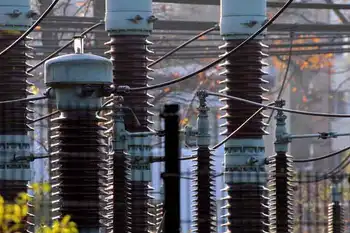Volt to get 100 km per litre, says GM
By Toronto Star
CSA Z462 Arc Flash Training - Electrical Safety Essentials
Our customized live online or in‑person group training can be delivered to your staff at your location.

- Live Online
- 6 hours Instructor-led
- Group Training Available
GM came up with the figure in early tests using draft guidelines from the U.S. Environmental Protection Agency for calculating the mileage of extended range electric vehicles, said Tony Posawatz, GM's vehicle line director for the Volt.
If the figure is confirmed by the EPA, which does the tests for the mileage posted on new car door stickers, the Volt would be the first car to exceed triple-digit gas mileage, Posawatz said.
The Volt is powered by an electric motor and a battery pack with a 40-mile range. After that, a small internal combustion engine kicks in to generate electricity for a total range of 300 miles. The battery pack can be recharged from a standard home outlet.
Most automakers are working similar plug-in designs, but GM could be the leader with the Volt, which is due in showrooms late in 2010.
Toyota's Prius, the most efficient car now sold in the U.S., gets 48 miles per gallon. It is a gas-electric hybrid that runs on a small internal combustion engine assisted by a battery-powered electric motor to save gasoline.
The first-generation Volt is expected to cost near $40,000, making it cost-prohibitive to many people even if gasoline returns to $4 per gallon. The price is expected to drop with future generations of the Volt, but GM has said government tax credits and the savings on fuel could make it cost-effective, especially at 230 miles per gallon.
"We get a little cautious about trying to forecast what fuel prices will do," Posawatz said. "We achieved this number and if fuel prices go up, it certainly does get more attractive even in the near-term generation," he said.
GM was to presented details of the mileage figure at its technical center in the Detroit suburb of Warren.
Figures for the Volt's highway and combined city/highway mileage have not yet been calculated, Posawatz said. The combined mileage will be in the triple digits as well, he said, but both combined and highway will be worse than city because the engine runs more on longer highway trips.
The EPA guidelines, developed with input from automakers, figure that cars like the Volt will travel more on straight electricity in the city than on the highway. If a person drives the Volt less than 40 miles, in theory they could go without using gasoline.
The mileage figure could vary as the guidelines are refined and the Volt gets further along in the manufacturing process, Posawatz said.
GM is about halfway through building about 80 Volts that will look and behave like the production model, and testing is running on schedule, Posawatz said.
Two critical areas, battery life and the electronic switching between battery and engine power, are still being refined, but the car is on schedule to reach showrooms late in 2010, he said.
GM is simulating tests to make sure the new lithium-ion batteries last 10 years, Posawatz said.
"We're further along, but we're still quite a ways from home,'' he said. "We're developing quite a knowledge base on all this stuff. Our confidence is growing.''
The other area of new technology, switching between battery and engine power, is proceeding well, he said, with engineers just fine-tuning the operations.
"We're very pleased with the transition from when it's driving EV (electric vehicle) to when the engine and generator kick in,'' he said.
GM also is finishing work on the power cord, which will be durable enough that it can survive being run over by the car. The Volt, he said, will have software on board so it can be programmed to begin and end charging during off-peak electrical use hours.
Chrysler LLC, Ford Motor Co. and Daimler AG are all developing plug-ins and electric cars, and Toyota Motor Corp. is working on a plug-in version of its gas-electric hybrid system. Nissan Motor Co. announced last month that it would begin selling an electric vehicle in Japan and the U.S. next year.











